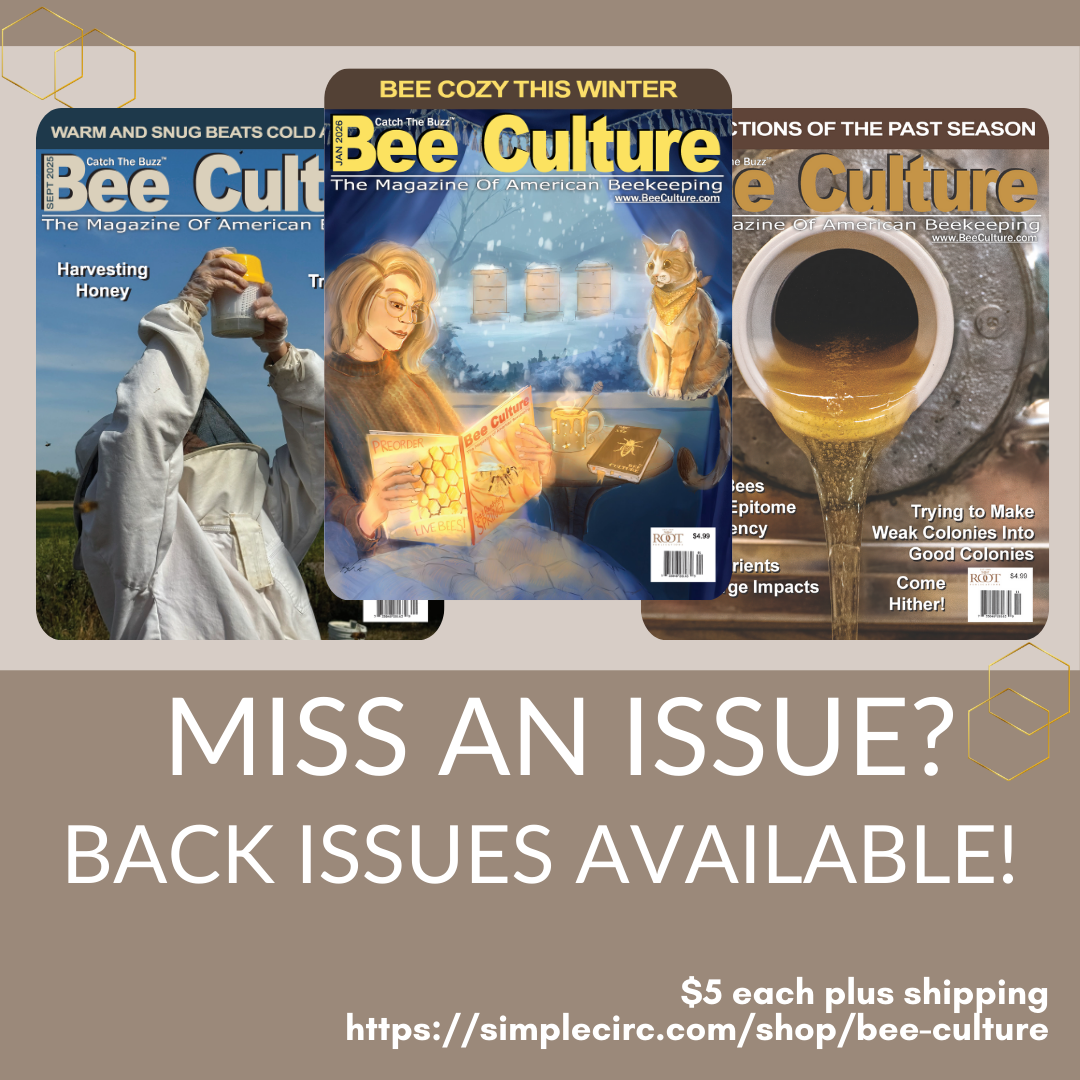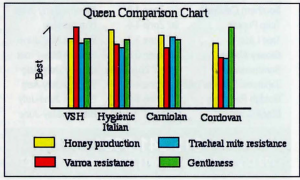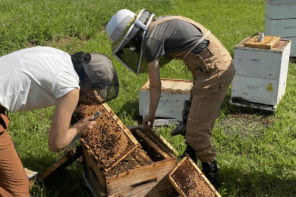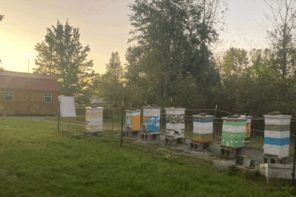By: Morris Ostrofsky
This article originally appeared in the Spring 2018 issue of BEEKeeping Your First Three Years
Replacing a Queen Isn’t Difficult, but Requires Some Care
Unlike the Queen of England, honey bee queens do not have long reigns. One or two years is the average time a queen stays on the throne. Strong, productive colonies are the beekeeper’s goal. After roughly a year (sometimes two) the queen’s job performance does not support this goal. This means the beekeeper must initiate multiple reign changes.
There are several reasons for the reign changes: poor performance, defensive disposition, improvement of Varroa resistance, reduced susceptibility to disease, and reduction of swarming tendency. While a beekeeper can let the bees produce their own new queen, the consequence is a delay of brood production for one month. If this takes place just prior to the main nectar flow, waiting for nature to take its course may not be the best option. When a beekeeper replaces an old queen with a new one, it is referred to as requeening.
In most cases the beekeeper can decide when the reign change is going to take place. You can requeen most times during the year except Winter in the northern states. The easiest time to requeen is Spring. The reason is when there is a nectar flow in progress the bees are in a good mood. The colony is also smaller in the Spring than later in the year making it easier to locate the old queen. Queen availability is another plus for Spring requeening. Additionally requeening in Spring means you have time to try again should the first attempt fail.
Other than a larger population Summer requeening is similar to Spring. Requeening in Fall is more of a challenge; you have to find the old queen in a larger population. Getting the bees to accept a new queen during this time is challenging due to less food coming into the colony. There are, however, advantages to requeening in Fall; commercially produced queens are more available, often times better mated, and there is not the brood interruption that occurs in Spring.
In an emergency situation, when the queen is missing or dead, both the bees and the beekeeper must take immediate action. If the beekeeper determines that the colony is queenless and there is still brood in the hive, it is still possible to introduce a new queen. Purchasing and introducing a new queen is the most expedient way to solve this situation.
If a new queen is not introduced before all the existing brood emerges, some of the workers will begin laying unfertilized eggs. Laying workers are not receptive to being requeened and without a new queen the colony starts a downhill spiral. Small drones will emerge from the unfertilized eggs laid by the laying workers. Although the drones are fertile, this is the last genetic gasp of breath for the colony. No new workers are produced in this situation. The easiest and most humane way to solve this problem is to add the colony with the laying workers to another queenright colony.
So how do you select a successor? When selecting a new queen you have many choices. High priority characteristics should include Varroa resistance, gentleness, and productivity. This chart provides a comparison of the most desirable characteristics among the various queens. You have to decide what works well for you in your area and select accordingly.
The ads in this and past issues of this magazine are a source for locating queen producers. Look for sources that offer queens with desirable characteristics you seek. Locally produced queens are adapted to your area and are a better choice than queens from a different climate. Talk to other beekeepers to find out what has worked for them. Don’t forget to request that your new queen be marked with the current year’s color. You will be very grateful later that you did this.
Raising your own queens can be rewarding as well as possibly producing a higher quality queen than one you purchase. As BEEKeeping editor, Kim Flottum, has written, “The difference between queens you buy and queens you raise yourself is almost always the difference between light and lightening.” Bottom line to requeen you need a new queen in hand whether you purchase or raise her yourself.
If you purchase the queen, she will be shipped to you in a cage. There are a variety of queen cages. Regardless of the type of shipping cage used, they all have a screen through which the existing colony bees care for the new queen; the screen is also a source of ventilation. The queen should be placed into the hive shortly after you receive her. When you get her, give her a drop of water to keep her hydrated. Do not use sugar water or honey. It will get her sticky and possibly plug her breathing apparatus. Keep her at room temperature and away from drafts and in a dark environment. If you cannot introduce on the day you receive her, continue to give her a drop of water every few hours and try to move her to her new home as soon as possible.
Before going through the steps to install a new queen, feeding needs to be addressed. Feeding the bees sugar syrup while requeening, simulates a nectar flow. A simulated nectar flow in progress makes it more likely that the bees will accept the new queen. Even during an actual nectar flow you need to feed the colony. You do this because the nectar flow could stop at any time and you want to keep the bees in a receptive mood.
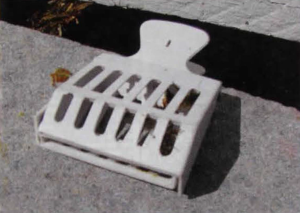 My preference for feeding is to use an inverted Mason jar with a lid perforated with 1/16th inch holes. The jar needs to be centered and placed on top of a hole in an inner cover or one drilled into an outer cover. It is important to put an empty box over the feeder; this protects the syrup from sunlight and excessive heating. Because you do not want to open the hive unnecessarily during this sensitive time, using an external feeder is helpful. Note the entrance reducer in the photo. This is used to prevent robbing.
My preference for feeding is to use an inverted Mason jar with a lid perforated with 1/16th inch holes. The jar needs to be centered and placed on top of a hole in an inner cover or one drilled into an outer cover. It is important to put an empty box over the feeder; this protects the syrup from sunlight and excessive heating. Because you do not want to open the hive unnecessarily during this sensitive time, using an external feeder is helpful. Note the entrance reducer in the photo. This is used to prevent robbing.
Before introducing a new queen, the old queen must be replaced. That means you must find the old queen. The method I recommend is one I learned from Harry Vanderpool, commercial bee keeper and current president of the Oregon State Beekeeper’s Association. He gives credit to Kenny Williams, recently retired commercial beekeeper, as his source for this technique. This is his recommendation:
The following steps apply to a one or two brood box hive. In the case of a two brood box hive, you must first separate the two boxes before proceeding. Note: use little or no smoke while looking for the old queen. Too much smoke disrupts the queen’s normal behavior of “hanging out” where there are polished, empty cells and freshly laid eggs. When you smoke her, she leaves the nursery and you have lost your advantage of knowing where she usually is. She could now be any place making your search more challenging.
1. Take the outer cover off, invert it and place it on a stable surface; i. e. hive stand. If there is an inner cover, remove and set it aside. Place the top box on top of the inverted cover. Position yourself so that the sun is at your back and shining into the space between the frames.
2. Working in the bottom box, pull out the first frame closest to you. Don’t take the time to look at it; just hold on to it as you look into the box at the next frame. You are looking to see if the queen is on the front of that frame. If the queen is there, she should stand out due to her larger thorax and abdomen. If you don’t see her, look at the frame in your hand checking both sides before leaning it on the side of the hive or placing it in an empty nuc box.
3. Remove the second frame. Hold on to it without examining it and look at the face of the next frame in the box. Then look at the frame in your hand. After examining it, return it to the box. Continue this process.
4. If the queen is not found in the bottom box, continue searching in the top box as you did in the bottom.
5. Continue to work your way through the hive until you find the queen. The easiest way to capture her is to use a Queen Catcher available from bee suppliers. The spring action snaps the cage shut around the queen and the worker bees sized slots allow them to come and go while keeping the queen inside.
If possible make up a small nuc with two or three frames of bees, honey and pollen and put the old queen there. It is always best to have an emergency replacement in case your queen supplier can’t replace her quickly.
Now the fun part; installing the new queen. Among the common shipping cages are the three-hole Benton cage and the JZ BZ cage. The queens in these cages come with attendants. It is not necessary to release them before placing the cage into the hive. The Benton cage has two ends: one has a small cork and the other a candy plug covered with a cork. Remove the cork that covers the candy. The JZ BZ cage has one open end where the candy is located. It sometimes comes covered with a plastic cap. The candy plug is a time release mechanism. The bees chew on it, taking a few days, during which time they all “become friends”. When the workers remove the last of the candy, the queen is free to walk out. Do not poke the candy plug. It will ruin the time release mechanism.
To increase the likelihood of her acceptance, I recommend wrapping a single layer of cheap masking tape minimally around the candy plug; preferably around the entire cage. Covering the candy plug provides additional time for the queen and workers to get acquainted. Do not cover the screen with the tape.
Place the queen cage slightly off center of the brood area on the frame. This keeps her from being drowned by dripping syrup from your centered feeder. The cage should be on a 45 degree angle with the candy end up. The frames on either side of it can be squeezed around the cage to keep it in place. An alternate way to hold the cage in place is a rubber band. Note: the screen must not be blocked.
After five days, check on the queen’s status. One of two things will have taken place: she has been accepted or rejected. The majority of the time the queen will be accepted. On occasion she is not. If the queen is still in her cage and the workers appear to form a tight ball around the cage (referred to as balling), this indicates lack of acceptance. Non acceptance usually means there is an existing queen or queen cells in the hive. The workers will not accept a new queen under these conditions. The existing queen or queen cell(s) have to be removed in order to successfully introduce a new queen.
The more common situation is that the queen is accepted. She will either be released into the colony within the five days or she will still be in her cage.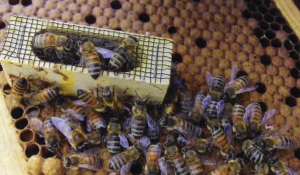 If she has been released, remove the empty cage and don’t bother the bees for two weeks. Sometimes with smaller populations it may take longer to release the queen. After five days, if she is still in the cage and the workers are feeding her, you can speed her release by removing the tape and poking a hole in the candy. Then put the cage back into the hive. Give it two to three days and check again. In most cases the queen will have been released. If she is still in the cage and alive, remove the remaining candy and quickly put the cage back into the hive before she can walk out. The reason the cage is returned to the hive is you want the queen to walk out of it in the darkness of the hive. Don’t bother the bees for two weeks. At that time you can remove the cage.
If she has been released, remove the empty cage and don’t bother the bees for two weeks. Sometimes with smaller populations it may take longer to release the queen. After five days, if she is still in the cage and the workers are feeding her, you can speed her release by removing the tape and poking a hole in the candy. Then put the cage back into the hive. Give it two to three days and check again. In most cases the queen will have been released. If she is still in the cage and alive, remove the remaining candy and quickly put the cage back into the hive before she can walk out. The reason the cage is returned to the hive is you want the queen to walk out of it in the darkness of the hive. Don’t bother the bees for two weeks. At that time you can remove the cage.
Waiting two weeks to look for the first brood is the hardest part of requeening. When you do open the hive, you should see brood. This is a sure sign that the bees have accepted their new queen. A young, new queen is the most effective way to raise strong and productive colonies. In your beekeeping career you will have the opportunity to participate in the successful coronation of many queens.




